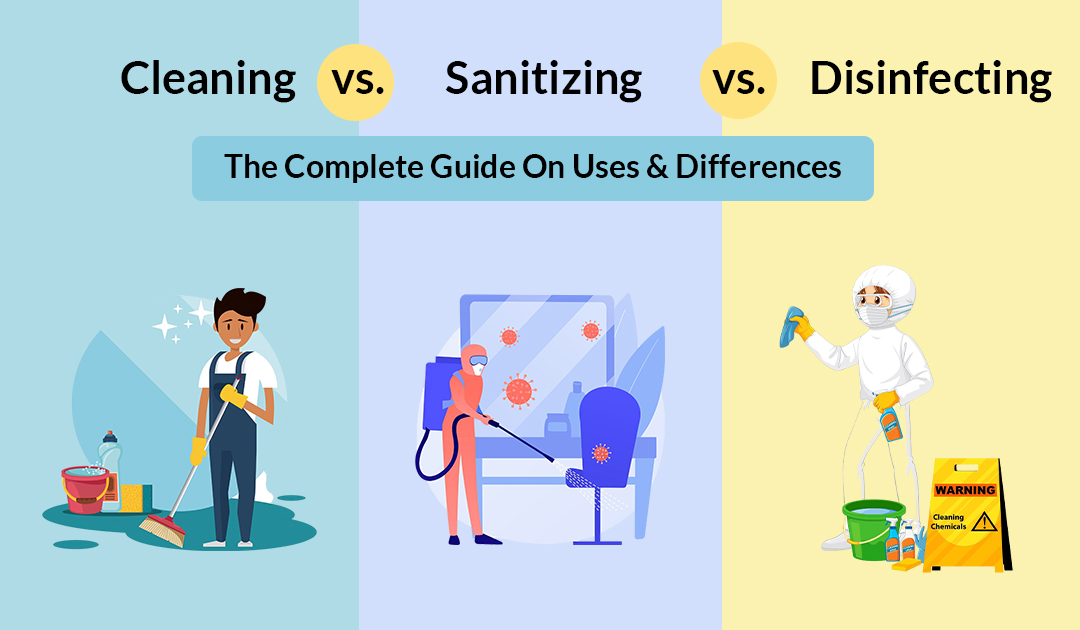Cleaning vs. Sanitizing vs. Disinfecting: The Complete Guide On Uses & Differences

Strong 8k brings an ultra-HD IPTV experience to your living room and your pocket.
Maintaining a clean environment is crucial for running a successful business. From having a cleaning checklist to building a schedule and using the right products, keeping your workplace clean regularly can motivate employees and boost customer loyalty. However, the depth of cleaning needed varies depending on factors like the need to slow the spread of germs and diseases. This article explains the differences between cleaning, sanitizing, and disinfecting, and when to use each.
Cleaning vs. Sanitizing vs. Disinfecting The main difference between cleaning and sanitizing is that cleaning involves clearing deposits and debris on a surface, while sanitizing kills bacteria after cleaning. Disinfecting, on the other hand, kills the majority of germs by being more potent and targeting specific microorganisms.
Regardless of the surface, cleaning should happen first before sanitizing. This is particularly important for surfaces that come into contact with food or are often sanitized. However, surfaces like windows and hallways do not necessarily need to be sanitized or disinfected every time. The three processes can be summarized as follows:
Cleaning: Focuses on surface-level cleansing, removing dust, dirt, and debris. It does not necessarily kill germs.
Sanitizing: Aims to remove most germs by either disinfecting or cleaning the surfaces.
Disinfecting: Uses chemicals to kill germs and lower the risk of spreading infections.
What is Cleaning? Cleaning involves removing visible stains and contamination on surfaces, including dirt, dust, food particles, spills, and other kinds of dirt. You can clean surfaces by dusting, brushing, or wiping the area. While cleaning does not eliminate germs, it can help reduce their numbers. Common cleaning products include:
Detergents
Soaps
Glass cleaners
Dusters
Vacuums
Degreasers
What is Sanitizing? Sanitizing goes a step further to reduce the number of microorganisms like bacteria, fungi, and viruses on a surface after cleaning. Sanitization reduces bacterial contaminants to safe levels according to public health requirements. Industry-standard sanitizers can kill or remove 99.999% of bacteria in under 30 seconds, making it a good preventative measure in schools, restaurants, hospitals, and corporate offices. However, sanitizing does not kill all viruses, leading to the next step.
Sanitization is often associated with the food industry, allowing facilities to get rid of most bacteria on contact surfaces using products like chlorine or quaternary ammonia solutions.
What is Disinfecting? Disinfecting eliminates even more germs and bacteria from surfaces. While sanitizing kills the majority of germs, disinfecting kills nearly 100% of bacteria, fungi, and viruses. Disinfecting is more effective at targeting specific disease-carrying microorganisms such as flu virus, coronavirus, and norovirus. Common disinfectants include:
Alcohol
Bleach
Chlorine
Disinfecting is more intense than sanitizing and is often carried out in areas with vulnerable populations, such as daycare centers and healthcare facilities. Cleaners may use disinfectant foggers to dispense chemicals over large surface areas. While some surfaces like cutting boards and tabletops only need to be sanitized, places like fitness centers and bathrooms often need to be disinfected.
Hire Expert Cleaners for Your Space When comparing different cleansing practices, the choice of method depends on the number of bacteria you need to decrease. Understanding the differences between cleaning, sanitizing, and disinfecting helps create a reliable cleansing program for your space. Hiring a commercial cleaning company like DMS Janitorial ensures your space is well-cleaned and healthy for both employees and customers. DMS Janitorial offers comprehensive cleaning and disinfection services for commercial spaces with high-grade disinfection experts. Contact them for inquiries or guidance on booking their services.
Note: IndiBlogHub features both user-submitted and editorial content. We do not verify third-party contributions. Read our Disclaimer and Privacy Policyfor details.


